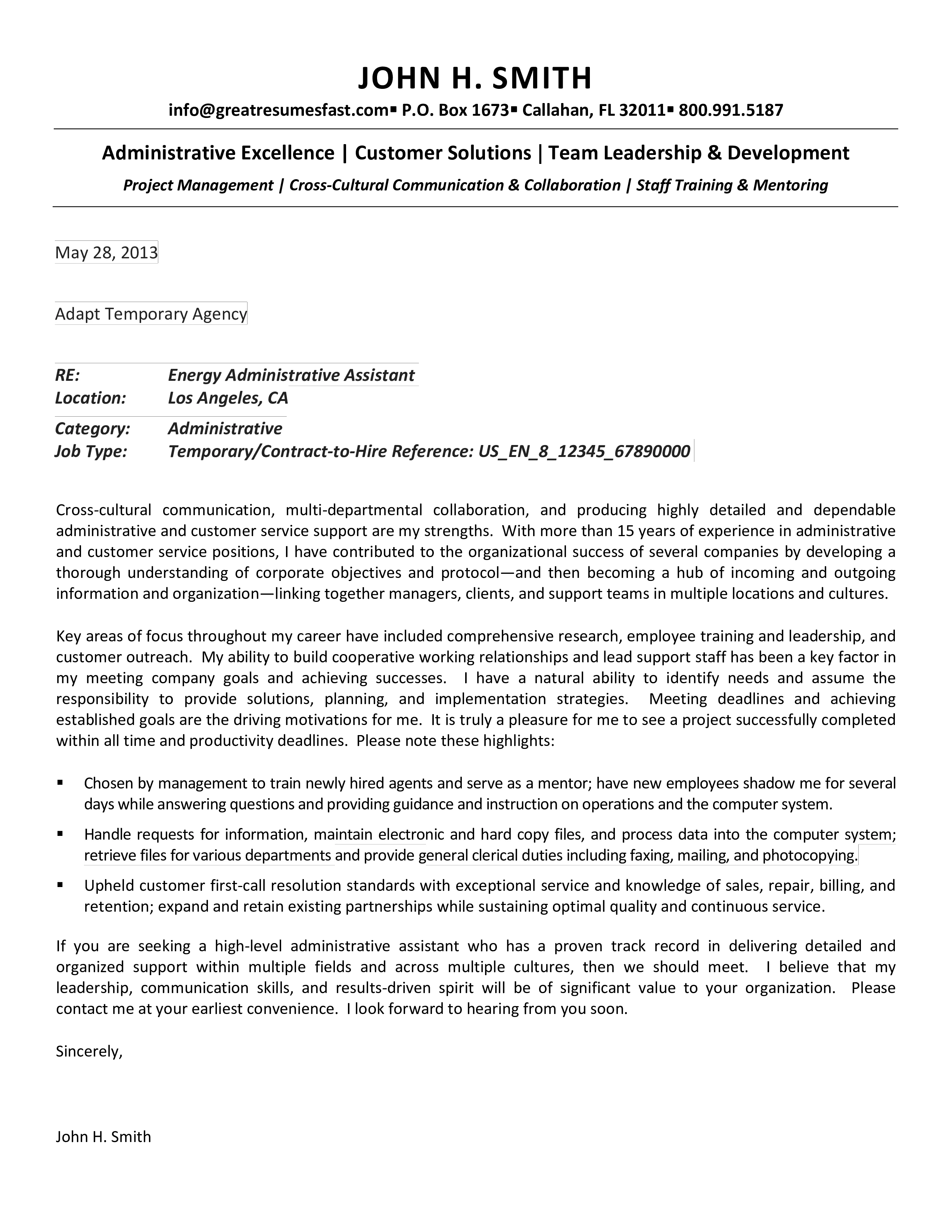Understanding the Importance of a Cover Letter for Admin Assistants
In the competitive world of administrative assistant roles, a well-crafted cover letter is your first and often most crucial opportunity to make a strong impression. It serves as a vital introduction, going beyond the basic information provided in your resume to showcase your personality, enthusiasm, and unique qualifications. A compelling cover letter can significantly increase your chances of securing an interview by demonstrating your genuine interest in the position and the company. Furthermore, it allows you to elaborate on specific skills and experiences that align with the job requirements, providing context and depth that a resume alone may not capture. Therefore, investing time and effort in creating a persuasive cover letter is a strategic move for any aspiring admin assistant aiming to stand out from the competition.
Key Elements of a Compelling Admin Assistant Cover Letter
A compelling cover letter for an admin assistant position is built upon several essential elements. Firstly, it should be personalized to the specific job and company, avoiding generic templates. Secondly, it should clearly state the position you are applying for and express your enthusiasm. Thirdly, the letter must highlight your relevant skills and experience, providing specific examples of how you have excelled in similar roles. A well-structured cover letter includes a concise opening paragraph, engaging body paragraphs that elaborate on your qualifications, and a strong closing statement that reiterates your interest and invites further communication. Including a brief mention of your understanding of the company’s mission or values can also demonstrate your commitment and research efforts, increasing the likelihood of a positive response. Remember that the cover letter should complement, not duplicate, your resume, offering a narrative that showcases your personality and suitability for the role.
Highlighting Your Skills and Experience
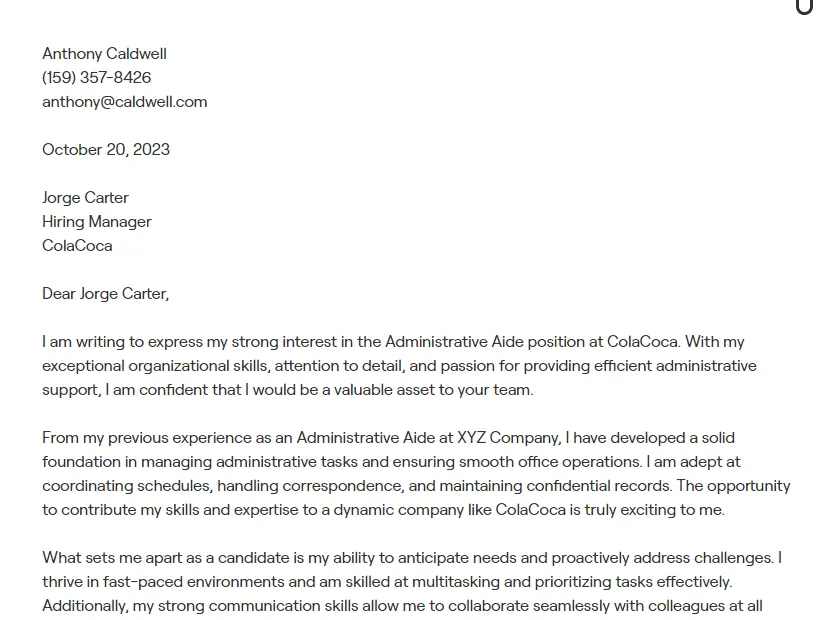
Showcasing Relevant Skills and Abilities
When crafting your cover letter, it is vital to effectively showcase your relevant skills and abilities. Begin by carefully reviewing the job description, identifying the key skills the employer is seeking. These might include proficiency in specific software (like Microsoft Office), strong organizational skills, excellent communication abilities (both written and verbal), and the ability to manage multiple tasks simultaneously. In your cover letter, provide specific examples of how you’ve utilized these skills in past roles. For instance, describe a situation where you streamlined office processes, managed complex scheduling, or handled sensitive information with discretion. By offering concrete examples, you transform abstract skills into tangible evidence of your capabilities, making a more compelling case for your suitability for the position. This approach helps the hiring manager visualize your potential contributions to their team.
Quantifying Achievements and Results
To truly impress a hiring manager, quantify your achievements whenever possible. Instead of simply stating that you improved office efficiency, provide specific metrics, such as “increased efficiency by 15%” or “reduced data entry errors by 10%.” Similarly, if you improved customer satisfaction, mention the percentage of positive feedback you received or the number of complaints you resolved. By using numbers and data, you demonstrate the tangible impact you’ve had in previous roles, providing concrete evidence of your capabilities. This not only adds credibility to your claims but also highlights your ability to deliver results. If you managed projects, mention the scope and your role in successful completion. Including quantifiable results makes your cover letter more impactful and memorable, setting you apart from candidates who only provide general statements about their abilities.
Tailoring Your Cover Letter to the Job Description
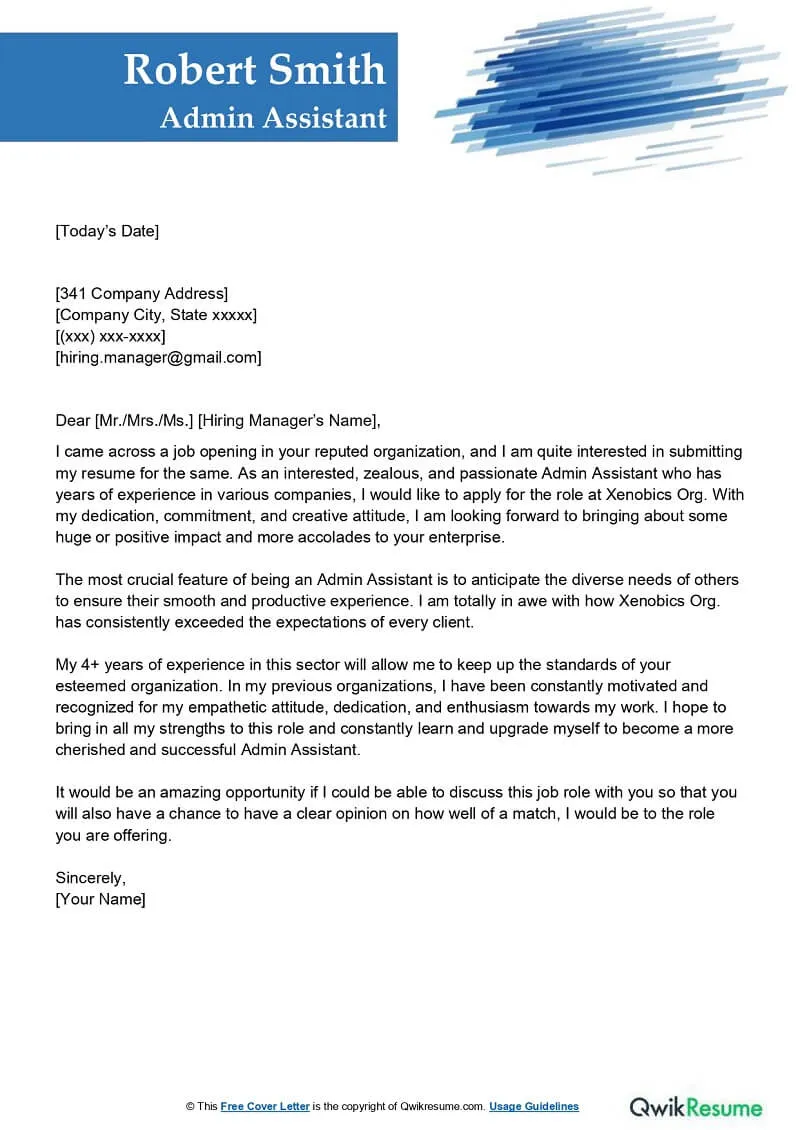
One of the most critical aspects of writing an effective cover letter is tailoring it to each specific job description. Avoid the temptation to use a generic template; instead, carefully analyze the job posting and identify the key requirements and desired qualifications. Then, in your cover letter, directly address these requirements. Use the same keywords and phrases from the job description to demonstrate your understanding of the role and your ability to meet the employer’s needs. Highlight the specific skills and experiences that align with the job’s responsibilities, providing concrete examples of how you’ve excelled in similar situations. Customizing your cover letter shows that you have taken the time to understand the position and that you are genuinely interested in the opportunity, making it more likely that your application will be given serious consideration. Remember, a tailored cover letter is a sign of your professionalism and attention to detail.
Researching the Company and Addressing the Hiring Manager
Demonstrating your knowledge of the company and addressing the hiring manager by name can significantly boost your cover letter’s impact. Research the company’s mission, values, and recent activities. Mentioning specific projects or initiatives can show your genuine interest and understanding of their business. If possible, find out the name of the hiring manager or the person who will be reviewing applications. Addressing your cover letter to a specific individual adds a personal touch and shows that you’ve taken the extra step to learn about the organization. This level of detail conveys professionalism and attention to detail, making a positive impression and increasing the likelihood of your application being noticed. Websites like LinkedIn and the company’s ‘About Us’ section can provide valuable information to help you craft a more personalized and compelling cover letter.
Structuring Your Cover Letter for Maximum Impact
Crafting a Strong Opening Statement

Your opening statement is your chance to grab the hiring manager’s attention and make a strong first impression. Avoid generic phrases like “I am writing to apply for the position of…” Instead, start with a concise and compelling statement that immediately captures the reader’s interest. You could express your enthusiasm for the role, mention a specific achievement relevant to the job, or briefly highlight a unique skill or experience that aligns with the company’s needs. The opening should clearly state the position you’re applying for and why you’re a great fit. Keep it focused and engaging, and remember that this opening sets the tone for the entire letter. It should convey your personality, professionalism, and genuine interest in the opportunity. Use this crucial space to distinguish yourself from the other candidates and make the hiring manager eager to continue reading.
Developing Engaging Body Paragraphs
The body paragraphs are the heart of your cover letter, where you delve into your qualifications and demonstrate your suitability for the role. Each paragraph should focus on a specific skill, experience, or achievement, providing detailed examples to support your claims. Use the STAR method (Situation, Task, Action, Result) to structure your responses, providing context, outlining the challenges, explaining the actions you took, and quantifying the outcomes. Keep the paragraphs concise and to the point, avoiding unnecessary jargon or overly complex sentences. Use action verbs to start each sentence and keep your writing style active and engaging. Connect your skills and experiences directly to the job requirements, demonstrating how you can contribute to the company’s success. A well-organized and compelling body section will showcase your qualifications, making a strong case for your candidacy.
Writing a Powerful Closing Statement
Your closing statement should reiterate your interest in the position and summarize why you are the ideal candidate. Express your enthusiasm for the opportunity and your belief that your skills and experience align perfectly with the job requirements. Clearly state your availability for an interview and provide your contact information for easy access. Avoid generic closing phrases; instead, craft a statement that reflects your personality and genuine excitement about the role. If you have any specific follow-up actions, like submitting references or providing additional documents, mention them briefly. Finally, thank the hiring manager for their time and consideration, showing respect for their efforts. A well-written closing statement leaves a lasting positive impression, leaving the hiring manager with a clear call to action.
Formatting and Proofreading Your Cover Letter
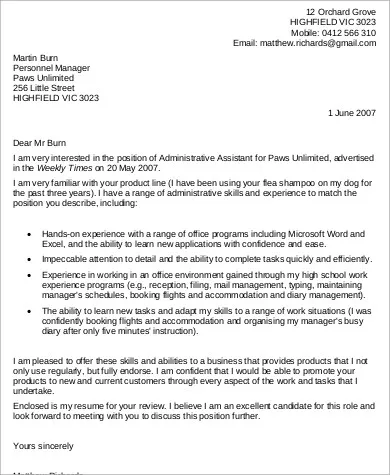
Ensuring a Professional Appearance
The appearance of your cover letter is as important as its content. Ensure your cover letter is formatted professionally and easy to read. Use a standard font like Times New Roman, Arial, or Calibri, keeping the font size between 11 and 12 points for optimal readability. Maintain consistent formatting throughout the document, including margins, line spacing, and paragraph indentation. Use headings and bullet points to break up large blocks of text and make it easier for the reader to scan the letter. Save your cover letter in a professional file format like PDF to preserve the formatting, making it look consistent across different devices and operating systems. A well-formatted cover letter demonstrates your attention to detail and professionalism, making a positive first impression on the hiring manager.
Proofreading for Errors and Accuracy
Proofreading is an essential step in ensuring your cover letter is polished and error-free. Carefully review your letter for any grammatical errors, spelling mistakes, and typos. Read it aloud to catch any awkward phrasing or sentence structures. It is also beneficial to have a friend or colleague review your cover letter, as a fresh pair of eyes can often spot mistakes you might have missed. Pay close attention to details such as the correct use of punctuation, proper capitalization, and accurate dates and contact information. Correct spelling and grammar will show professionalism and attention to detail, and will significantly increase your chances of making a positive impression on the hiring manager. A single error can undermine your credibility; therefore, take the time to proofread thoroughly before submitting your application.
Using Action Verbs and Keywords Effectively
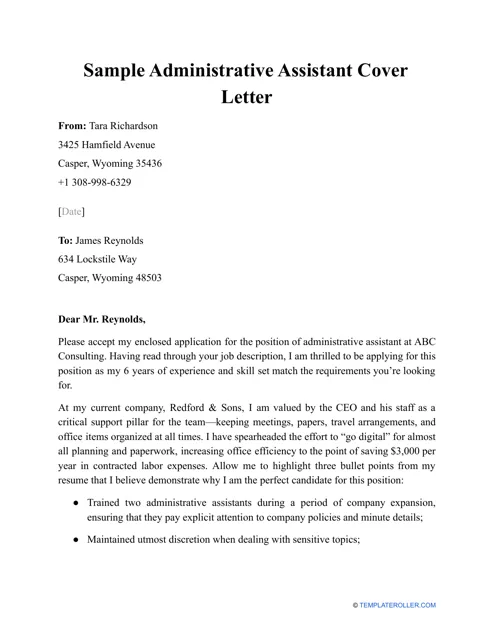
Action Verbs to Showcase Your Capabilities
Using strong action verbs is crucial for making your cover letter impactful and engaging. Action verbs help to describe your accomplishments and make your qualifications more vivid. Start each sentence with action verbs that reflect your skills and experiences, such as ‘Managed,’ ‘Organized,’ ‘Coordinated,’ ‘Implemented,’ ‘Developed,’ ‘Led,’ ‘Improved,’ ‘Streamlined,’ ‘Created,’ or ‘Resolved.’ Choose verbs that are relevant to the job description and highlight the specific skills the employer is seeking. Avoid passive voice and focus on active verbs that showcase your accomplishments and contributions. By using compelling action verbs, you create a dynamic and memorable cover letter that effectively demonstrates your capabilities, making a more compelling case for your candidacy and increasing the likelihood of being invited for an interview.
Incorporating Keywords to Attract Attention
Incorporating relevant keywords from the job description is an effective strategy to get your cover letter noticed by both human readers and Applicant Tracking Systems (ATS). Carefully analyze the job posting and identify the key skills, responsibilities, and qualifications mentioned. Then, strategically integrate these keywords throughout your cover letter, using them in your descriptions of your skills and experience. This demonstrates that you meet the employer’s requirements and that you possess the necessary qualifications for the role. However, avoid keyword stuffing, as it can make your cover letter sound unnatural. Instead, use the keywords naturally and contextually, ensuring that your writing is clear, concise, and engaging. By strategically incorporating keywords, you increase the chances of your cover letter being recognized and prioritized by recruiters and hiring managers, ultimately increasing your chances of an interview.
Tips for Sending Your Cover Letter

Choosing the Right File Format
When sending your cover letter, choosing the right file format is critical to ensure it is displayed correctly and maintains its professional appearance. The recommended file format is PDF (Portable Document Format), which preserves the formatting and layout of your document, regardless of the recipient’s device or operating system. This ensures that your cover letter is displayed as intended, preventing formatting errors or changes. Avoid sending your cover letter in a format like DOC or DOCX, as these formats can be susceptible to formatting issues depending on the software used by the recipient. Always save your cover letter as a PDF before attaching it to your application or sending it via email. This simple step helps ensure that your cover letter presents a polished and professional image, increasing your chances of making a positive impression on the hiring manager.
Writing a Compelling Email Subject Line
Your email subject line is your first opportunity to grab the hiring manager’s attention, therefore it’s essential to make it clear and compelling. When sending your cover letter via email, write a subject line that is concise and immediately communicates the purpose of your email. Include the job title and your name, such as “Admin Assistant Application - [Your Name]” or “Application for Admin Assistant Position.” This helps the hiring manager quickly identify your application and avoids the email getting lost in a crowded inbox. Avoid generic subject lines like “Job Application” or “Resume attached,” as these are less likely to capture attention. Make sure your subject line is professional and easy to understand. By crafting a compelling and informative subject line, you increase the chances that your email will be opened and your application will be reviewed.
Following Up on Your Application
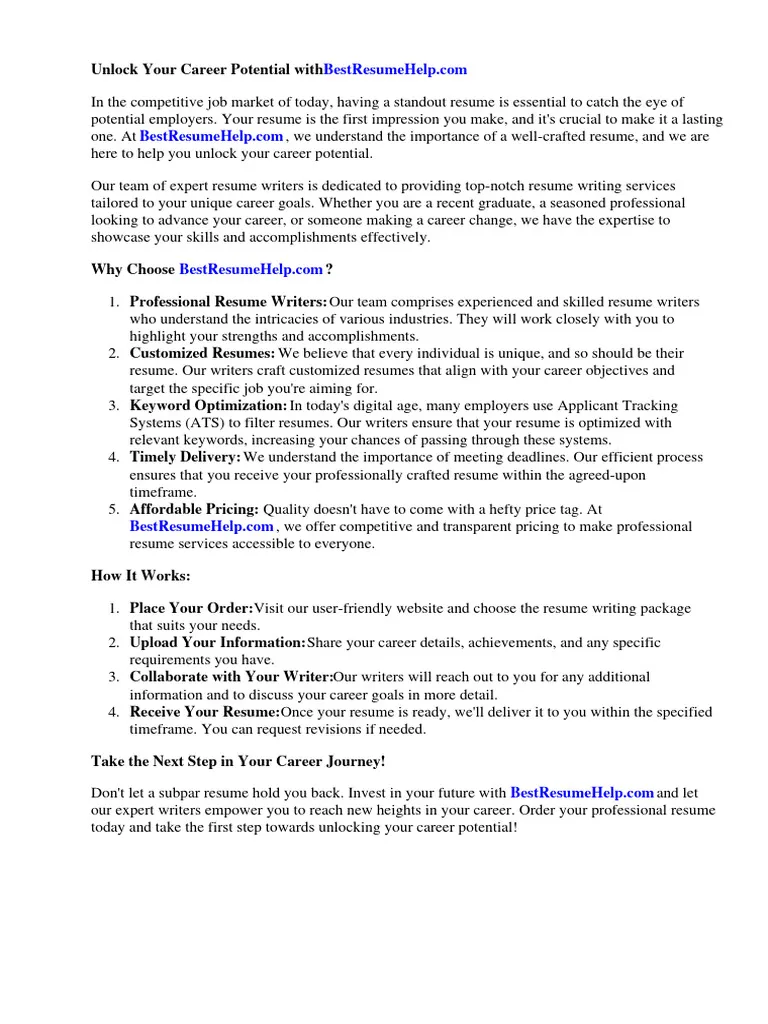
After submitting your cover letter and resume, it’s often appropriate to follow up on your application. Waiting a week or two after the application deadline is generally a good practice before sending a follow-up email. When sending a follow-up, reiterate your interest in the position and briefly mention why you’re a strong candidate. Refer to something specific from the job description or your conversation to remind them of your application. Keep the email concise and professional. Thank the hiring manager for their time and consideration, and express your eagerness to hear back from them. Following up shows that you are proactive and genuinely interested in the opportunity. If you don’t receive a response after a reasonable period, it may be best to move on. Remember, a polite and persistent follow-up can sometimes increase your chances of getting noticed.
